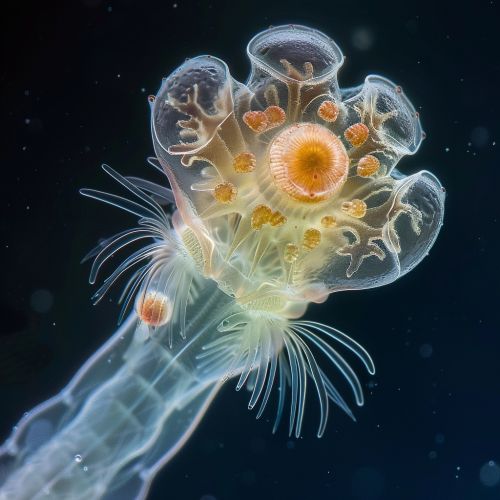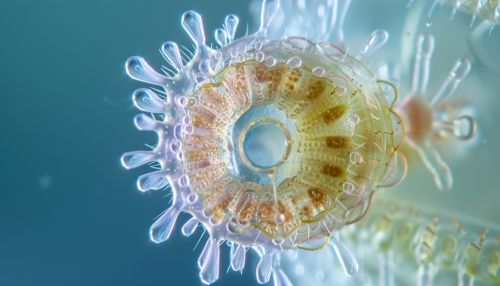Rotifer
Introduction
Rotifers are a group of microscopic aquatic animals of the phylum Rotifera. Rotifers are an important part of the freshwater zooplankton, being a major foodsource and with many species also contributing to the decomposition of soil organic material. The group is characterized by the corona, a ciliated crown around the mouth, which is used to sweep food into the mouth and for locomotion.
Anatomy and Morphology
Rotifers have bilateral symmetry and a variety of different shapes. The body of a rotifer is divided into a head, trunk, and foot, and is typically somewhat cylindrical. There is a well-developed cuticle, which may be thick and rigid, giving the animal a box-like shape, or flexible, giving the animal a worm-like shape; such rotifers are respectively called loricate and illoricate.


Classification
Rotifers are placed in the phylum Rotifera. It is estimated that there are around 2000 species of rotifers globally. The taxonomy of the group is currently under revision, however, and the number of species is likely to change with further study. The phylum is divided into three classes: Monogononta, Bdelloidea and Seisonidea.
Reproduction
Rotifers typically reproduce via parthenogenesis, although sexual reproduction has been observed in some species. Parthenogenesis is a form of asexual reproduction in which offspring are produced by females without the contribution of a male.
Ecology
Rotifers are found in many freshwater environments, such as rivers and lakes, and some species are found in saltwater environments. They are also commonly found in moist soil and on mosses, lichens, and algae growing on tree trunks and rocks.
